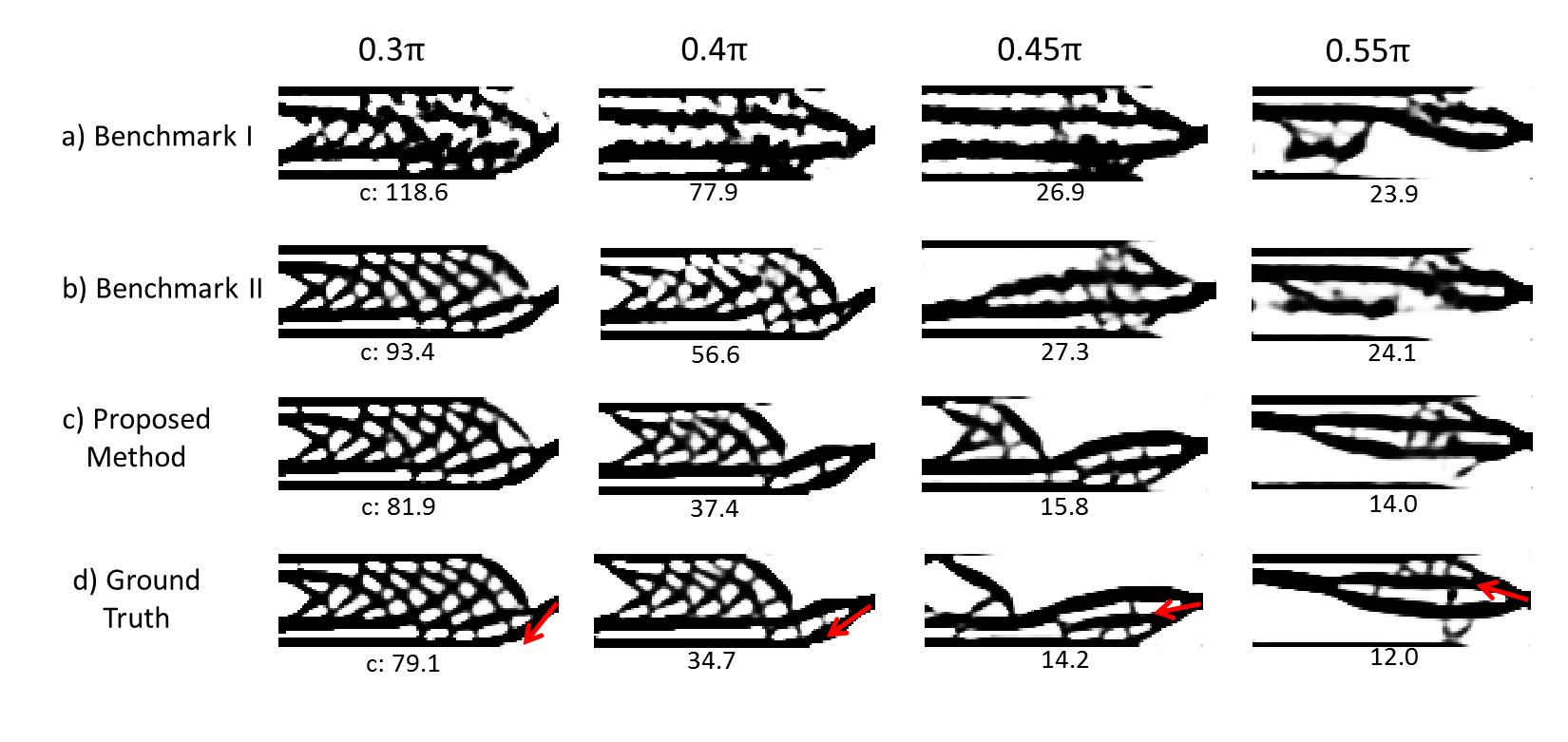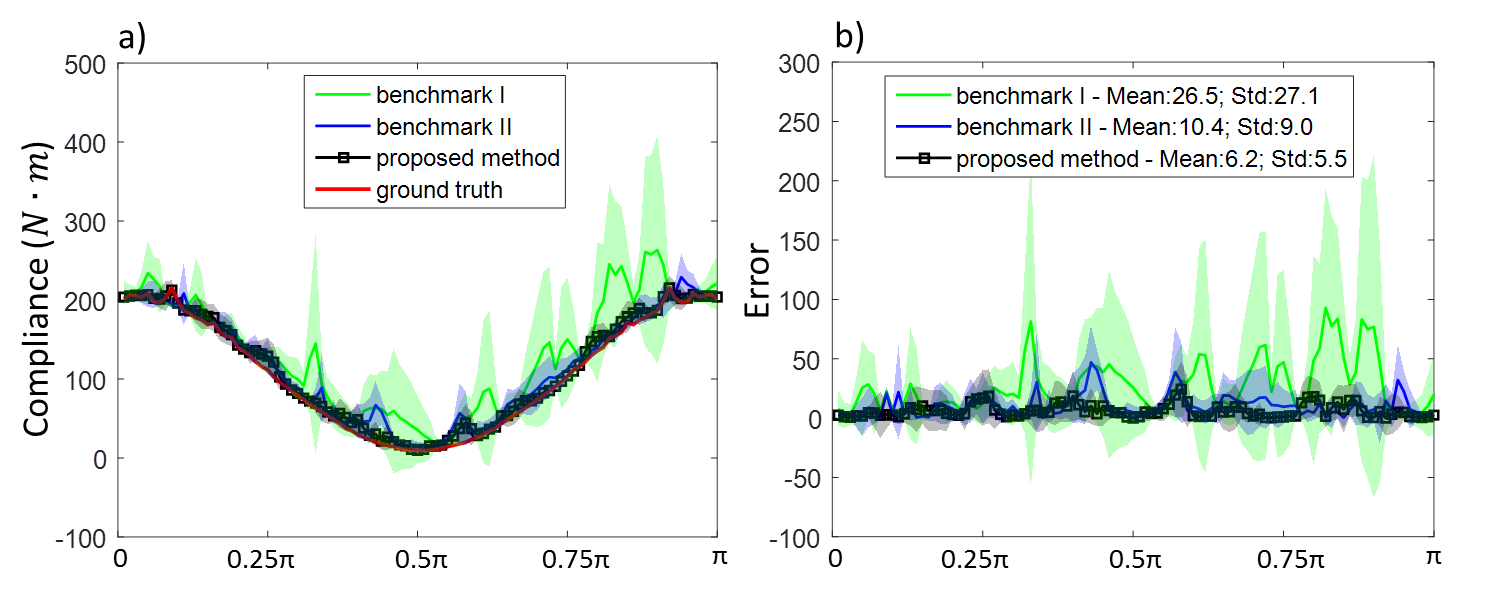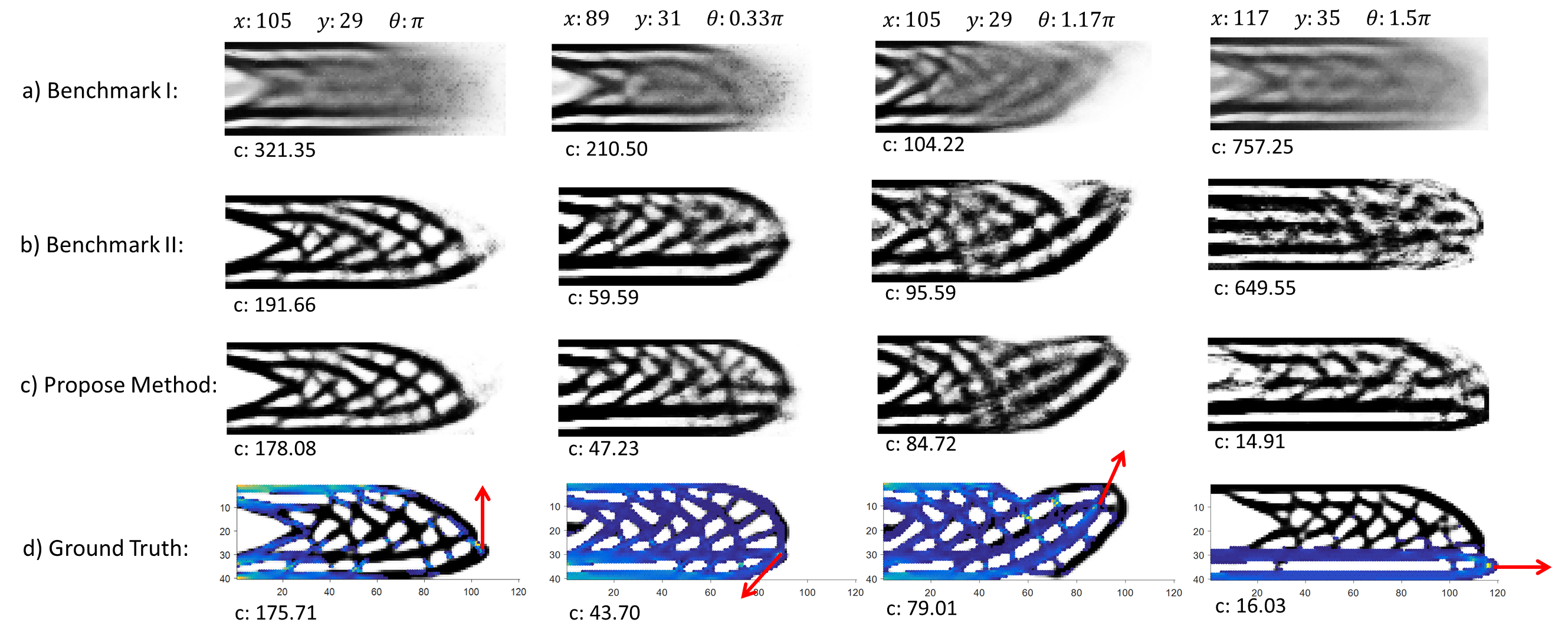We introduce a theory-driven mechanism for learning a neural network model that performs generative topology design in one shot given a problem setting, circumventing the conventional iterative procedure that computational design tasks usually entail. The proposed mechanism can lead to machines that quickly response to new design requirements based on its knowledge accumulated through past experiences of design generation. Achieving such a mechanism through supervised learning would require an impractically large amount of problem-solution pairs for training, due to the known limitation of deep neural networks in knowledge generalization. To this end, we introduce an interaction between a student (the neural network) and a teacher (the optimality conditions underlying topology optimization): The student learns from existing data and is tested on unseen problems. Deviation of the student's solutions from the optimality conditions is quantified, and used to choose new data points for the student to learn from. We show through a compliance minimization problem that the proposed learning mechanism is significantly more data efficient than using a static dataset under the same computational budget.
Full paper is available here.
We define a one-shot solution generator as a feedforword neural network that computes a solution (e.g., a topology) given problem settings (e.g., loads). It is one-shot in the sense that computing solutions through the network is much less expensive than using an iterative algorithm. We define the generalization performance of the generator as the expected performance of its solutions over a distribution of problems. The performance is measured by the compliance of the predicted solutions to the problem settings. Specific to topology optimization, the compliance is defined as the optimality conditions.
We propose an active learning algorithm where the acquisition function is the l2 norm of the Lagrangian gradient. For each iteration of learning, we verify the learned network using a large set of inputs: For each input, we use the network to predict their corresponding solutions, and evaluate the goodness of the solutions through the acquisition function. The worth input is then chosen, and its ground truth solution computed through an iterative algorithm (augmented Lagrangian). This new data point is added to the training set for another round of network refinement.
Two case studies on compliance minimization problems are demonstrated:
 Sample solutions for (a) Case 1, where a point load is applied to the middle
node at the tip of the cantilever beam, with directions uniformly distributed
in [0,pi], and (b) Case 2, where the point load is applied to a node in the
highlighted area which occupies one-third of the design space, with its direction
drawn from [0,2pi]. Three different methods (include proposed method) are compared:
Sample solutions for (a) Case 1, where a point load is applied to the middle
node at the tip of the cantilever beam, with directions uniformly distributed
in [0,pi], and (b) Case 2, where the point load is applied to a node in the
highlighted area which occupies one-third of the design space, with its direction
drawn from [0,2pi]. Three different methods (include proposed method) are compared:
- Benchmark I - Static learning: Use a static dataset for training.
- Benchmark II - Active learning: Choose data points by measuring the difference between the compliance produced by the generator and the predicted compliance based (through polynomial curve fitting) on the training data.
- Proposed method: Similar to benchmark II, but verifying the model by measuring its violation to the physics-based optimality condition.
 Case 1 topologies predicted by (a) Benchmark I, (b) Benchmark II, (c)
the proposed method. (d) Ground truth computed using the Augmented Lagrangian
solver. Compliance values are shown at the bottom of each topology.
Loading directions are marked as red arrows.
Case 1 topologies predicted by (a) Benchmark I, (b) Benchmark II, (c)
the proposed method. (d) Ground truth computed using the Augmented Lagrangian
solver. Compliance values are shown at the bottom of each topology.
Loading directions are marked as red arrows.
 Comparisons on absolute compliance and compliance error.
Comparisons on absolute compliance and compliance error.
 Case 2 optimal topologies predicted by (a) Benchmark I, (b) Benchmark II,
and (c) the proposed method. (d) The ground truth topologies with design
sensitivity information (see paper for details):
cold (warm) color indicates lower (higher)
design sensitivity. The point loads are marked as arrows with detailed
input values reported at the top of the figure. The compliance values are
shown at the bottom of each topology.
Case 2 optimal topologies predicted by (a) Benchmark I, (b) Benchmark II,
and (c) the proposed method. (d) The ground truth topologies with design
sensitivity information (see paper for details):
cold (warm) color indicates lower (higher)
design sensitivity. The point loads are marked as arrows with detailed
input values reported at the top of the figure. The compliance values are
shown at the bottom of each topology.
Comparisons on solution generation failure rate (failure = compliance gap > 1000) and the median compliance gap:
| Failure rate: mean(std) | Median compliance gap: mean(std) | |
|---|---|---|
| Benchmark I | 5.12% (1.2%) | 22.12 (3.34) |
| Benchmark II | 0.64% (0.42%) | 6.64 (0.87) |
| Proposed | 0.16% (0.09%) | 5.2 (0.6) |